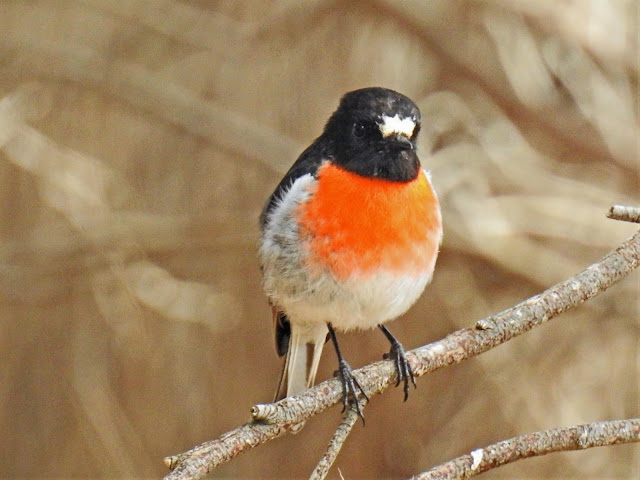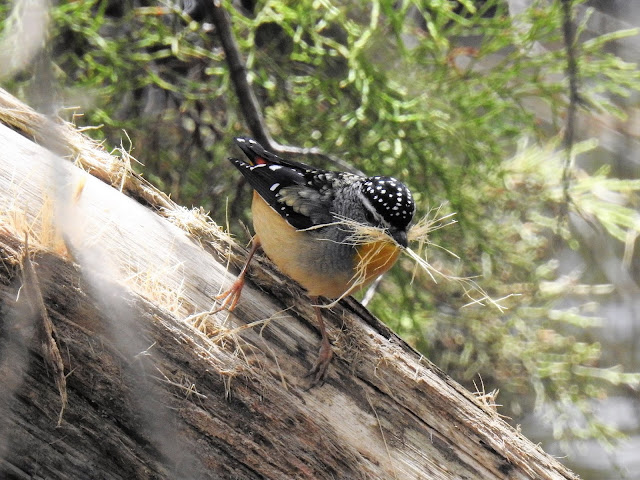Whilst visiting South Australia, I booked myself onto a Pelagic trip. It's an ocean bird watching day trip that usually travels 40+ kms from the coast where we are in an area where the continental shelf drops down to deeper waters, possibly up to 300m depth.
Birders have to book these pelagic trips months in advance as they are usually very popular.
It was mid November & the weather conditions for the day were "fine & calm off shore with light winds". For pelagic trips that's not what birders want to hear as usually the birding is not as good with calm seas & winds.
We boarded our boat around 7am, 1 hr later than it was booked for due to an unknown reason.
It usually takes a few hours to arrive at the edge of the continental shelf. During those 1st couple of hours we can be entertained with sightings of the odd whale, shark, dolphin or pelagic birds flying past.
I added 7 species to my life list on this pelagic. For me the weather was smoothe sailing & I also had a calm stomach. For the birding though, there was much disappointment from the other people on board as there was a greater expectation of more species. I also saw several Great-winged Petrels, which are similar in appearance to Grey-faced Petrels (to my untrained eyes)
Other species also seen & not photographed were Hutton's, Fluttering & Short-tailed Shearwaters, all of which I have seen off shore in Queensland.
I use a bridge camera with a 83 mm zoom, so the photos are of variable quality.
30 minutes after leaving port we pass a Blue Whale that has come up to the surface.
Many of the birds came & went through out the day. Some others just sat around the boat as the crew threw out burly - that is usually shark liver to entice the birds to come close to the boat.
The birds can smell the slick for several kms.
For convenience I've placed each of the species together even though some of the photos are hours apart.
White-chinned Petrel have a subtle white patch under their chin. Wing span of 1.4 m
We saw 45 Shy Albatross on this day. Because there were so many of them, I was always in awe of their size every time they flew towards the boat - 2.1 to 2.6 m wing span.
Northern Giant Petrel have a wing span of up to 2.1 m. There were 4 of these.
Northern Giant-petrel with a Shy Albatross behind
20 Grey-faced Petrels came & went during the day.
Grey-faced Petrel at bottom & Great-winged Petrel back.
Shy Albatross at top of photo with Wandering below.
Comparison sizes with White-chinned Petrel on the right.
A single Arctic Jaegar (pronounced yae-gar) flew past.
It's a little difficult to see, but that's a jelly fish top centre of this photo.
2 Black-browed Albatross (immature bird) showed up as well....front bird with the rest being Shy Albatross.
Black-browed Albatross.
Portland Gannet Colony is at Portland Victoria. The drive to there was a just over 1 hr from Port MacDonnell. I had heard on my pelagic trip that people can now access the restricted area if we phone the information centre.
A very dedicated birder & supporter of the Gannet colony takes birders into the restricted area on dedicated days.
This photo was taken the day before from behind the locked gate. Hundreds of Australasian Gannets use the tip of Point Danger as a roost & breeding place.
Hundreds were feeding at any given time.
A few hundred metres further out to the sea was another huge colony of gannets on a rocky island
There's estimated to be 10,000 birds there.
Inside the restricted area we were 20 m from the breeding birds. There were chicks at various ages.
Wow, it was an awesome sight, & they were a noisy bunch of birds.
This is the bird that I have come to see. Centre of this photo below is a Cape Gannet.
Cape Gannets are endemic to South Africa & just a few birds have made Portland home.
The major feature difference to the Aust Gannets is that the Cape Gannet has a longer black stripe.
The Cape Gannets also have 2 chicks....being parented on this day by an Aust Gannet. The caretaker was astounded with this behaviour as the day before the chicks were with their rightful parents.
Cape Gannet (Left) sparing with Aust Gannet
Near the fence were the shells of 2 eggs retrieved from the colony to display the size of their eggs. They're about duck egg size.


































































































































